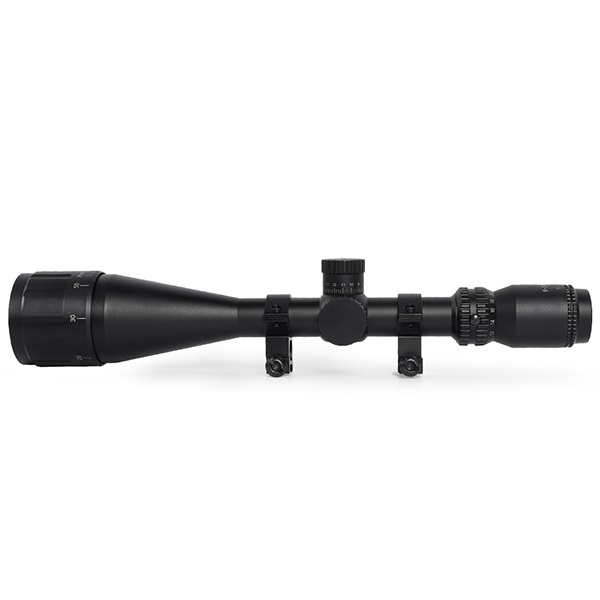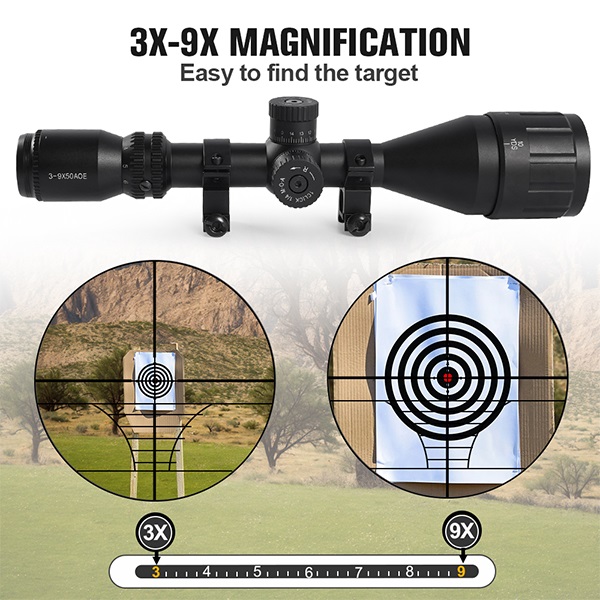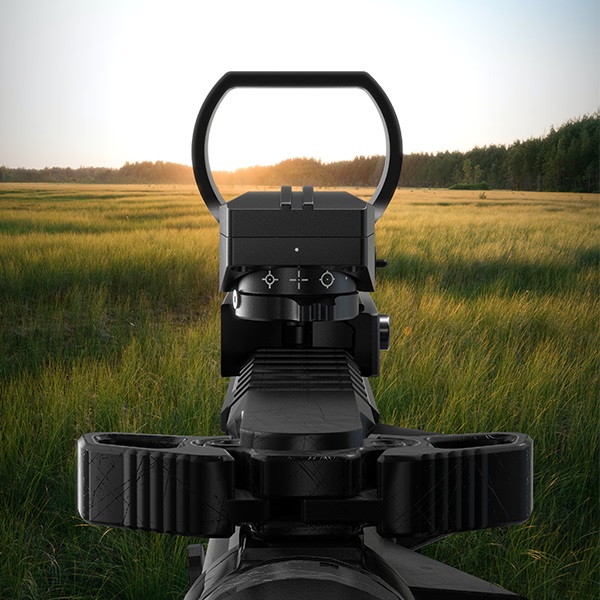Choosing a rifle scope isn't just about zoom levels or cool-looking turrets. It's about clarity when light is low. It's about holding zero after a long hike. And most importantly, it's about making sure your gear matches the way you shoot. Whether you're stalking game in the woods or working on precision at the range, this guide breaks down what matters when you're buying a rifle scope.

Before getting lost in specs, stop and ask: What's your main shooting style?
If you're a hunter, you probably need something lightweight and fast to aim. You might often shoot during early morning or late afternoon. That means lighting can be poor, and your scope needs to handle those conditions well. Eye relief and quick target acquisition should matter more than magnification alone.
If you're into competitive shooting, precision becomes the top priority. You'll want something with high clarity, fine-tuned adjustments, and a reticle that supports exact measurements. The smallest shift in windage could change your score.
And if you're using it for tactical applications or training, durability becomes everything. That scope should hold up through impact, weather changes, and rapid adjustments. You can't afford to lose zero after every field session.
Each purpose brings its own demands. You don't need a high-end scope for
casual backyard plinking, but you also don't want to rely on an entry-level
option in a professional match. So your first decision should always be about
use—not specs.
This is one of the most misunderstood parts of buying a scope. Fixed magnification scopes don't zoom in or out. What you see is what you get. That sounds limiting, but it isn't always a bad thing.
Fixed scopes are lighter, often more durable, and easier to learn. They're also faster to aim—perfect for close-range hunting where quick shots matter more than detail. A 4x fixed scope can be ideal in thick woods or for fast-moving targets.
Variable magnification scopes offer more flexibility. You can go from low to high zoom depending on what the shot calls for. If you're sitting in a blind with a clear field or working from a bench rest at the range, variable power is invaluable.
But more isn't always better. A 5–25x scope might sound impressive, but it's heavier, more complex to use, and often overkill for most field use. Always match the magnification range to the typical distances you shoot.
A larger objective lens lets in more light. That's true. A 50mm lens will show a brighter image than a 32mm lens—especially at higher magnification. But it also adds weight, height, and bulk to your rifle setup.
If you plan on moving through dense terrain or hiking long distances, a huge front lens can throw off balance and become a burden. Bigger lenses often need higher mounting rings, which raises your head position and can affect shooting posture.
There's a balance to strike. For low-light hunting, a 40–44mm objective lens is usually sufficient. If you mostly shoot in daylight or don't go above 10x magnification, smaller lenses will perform just fine.

There's no “best” reticle. Just what works best for you.
If you prefer clean visuals and intuitive aiming, a duplex reticle with thicker outer lines and a fine center crosshair works well. It's fast to pick up and great for most hunting scenarios.
If you shoot long-range or engage in competitive shooting, a mil-dot or BDC (Bullet Drop Compensation) reticle offers more data. These marks help you estimate distance, adjust for bullet drop, or correct for wind without touching your turrets.
Some scopes come with illuminated reticles. That can be helpful in low-light, but too much brightness can obscure your view. If you choose one, make sure brightness is adjustable—and not just a gimmick.
Eye relief is the distance between your eye and the scope where you still see a full image. Get too close, and recoil might reward you with a scope bite. Too far, and you'll get a partial, shadowed view.
This distance matters most when you're using high-recoil rifles or wearing gear like glasses. A good eye relief range is around 3.5 to 4 inches. Some scopes offer longer relief, especially those designed for scout or pistol builds.
If you're constantly shifting your shooting position or using unconventional stances, generous and forgiving eye relief helps a lot. Don't ignore it in favor of flashy features.
Parallax becomes a problem when the reticle appears to move off target as you shift your head slightly. At short distances, most scopes are set to a fixed parallax (usually 100 yards), and you won't notice much difference.
But at longer ranges—say, 300 yards and beyond—it can throw off your shot. Adjustable parallax (often via a side knob or objective ring) lets you fine-tune focus and eliminate this distortion.
If you're into precision shooting or plan on going past 200 yards regularly,
get a scope with this feature. Otherwise, it's not a must-have.
Turrets control windage and elevation—horizontal and vertical point-of-impact adjustments. They come in many styles, from capped hunting turrets to exposed tactical ones with clicks and stops.
Look for turrets that offer audible and tactile feedback. Each “click” should be consistent and reliable. Some scopes offer zero-stop functions, which let you return instantly to your original zero after adjustments. This is especially useful when you're making temporary changes for long shots.
Tracking accuracy—how reliably the scope moves point-of-impact as you turn the dials—is critical in high-stakes shooting. A scope that doesn't track consistently is useless in competition or precision work.
Build Quality and Weather Resistance
You want something with a solid, one-piece tube made of aircraft-grade aluminum. Nitrogen or argon purging helps prevent internal fogging. O-ring seals keep moisture and dust out. A shock-resistant build ensures that recoil or drops don't mess with your zero.
Even in casual use, weather can turn fast. A fogged-up scope ruins your opportunity. One that shifts zero after a bump can cost you an entire hunt or a target hit.
When it comes to durability, always read the fine print. Claims like “shockproof” or “water-resistant” vary across brands and models.

Most buyers forget to think about scope weight. But once you've carried it through a full day of walking, it matters. Heavy scopes are harder to keep steady, especially offhand.
Think about how the scope affects the balance of your rifle. A big front-heavy optic can make your firearm dip forward, which affects aim and fatigue. Lightweight scopes are great for short-range field use or mobile shooting positions.
If you're bench shooting, weight isn't a big deal. But if you're in the field? Every ounce counts.
Not every scope fits every rifle out of the box. Make sure the tube diameter matches your rings. Common sizes are 1 inch and 30mm, but others exist.
Check your rifle's rail system. Is it Weaver? Picatinny? Dovetail? That affects what mounts you'll need.
Also, think about mounting height. Too low, and the scope might touch the barrel. Too high, and your cheek weld becomes awkward. Eye relief should be maintained in your natural shooting posture.
The right rifle scope can enhance your shooting precision, your field awareness, and your confidence. But that choice isn’t always about the biggest specs or flashiest features. It’s about clarity, comfort, and consistent performance for what you need it to do.
If you're ready to explore high-performance rifle scopes designed for real-world use—whether you're hunting, target shooting, or dialing in from a bench—check out the latest models. For technical questions or expert suggestions, contact the team at cc1535@gmail.com.